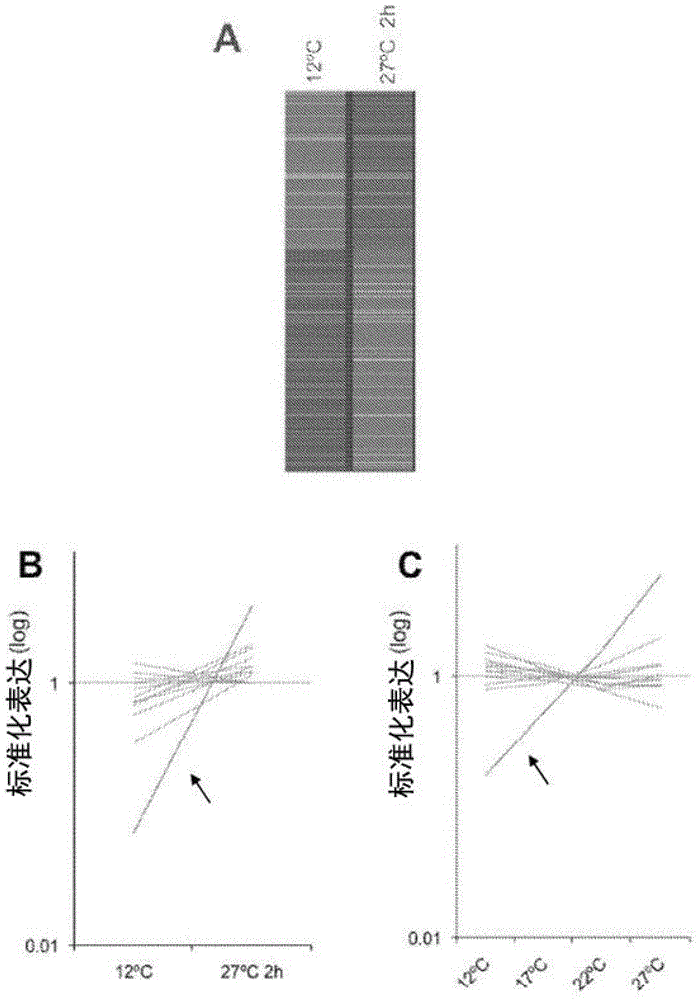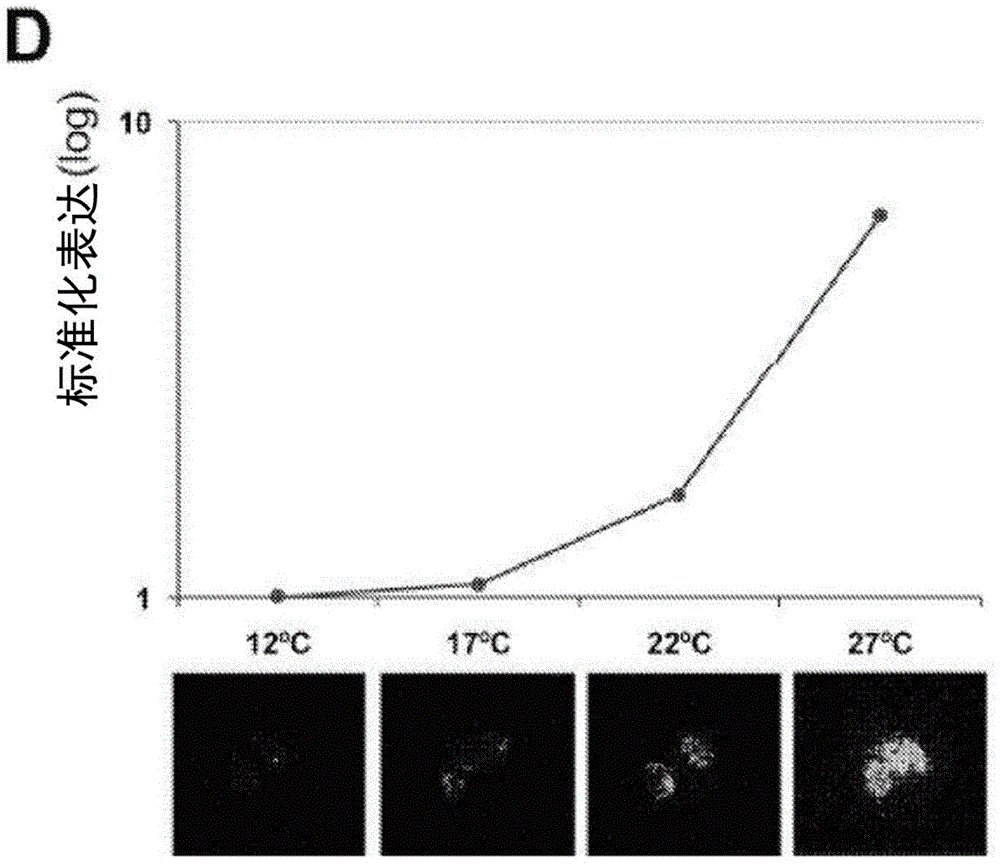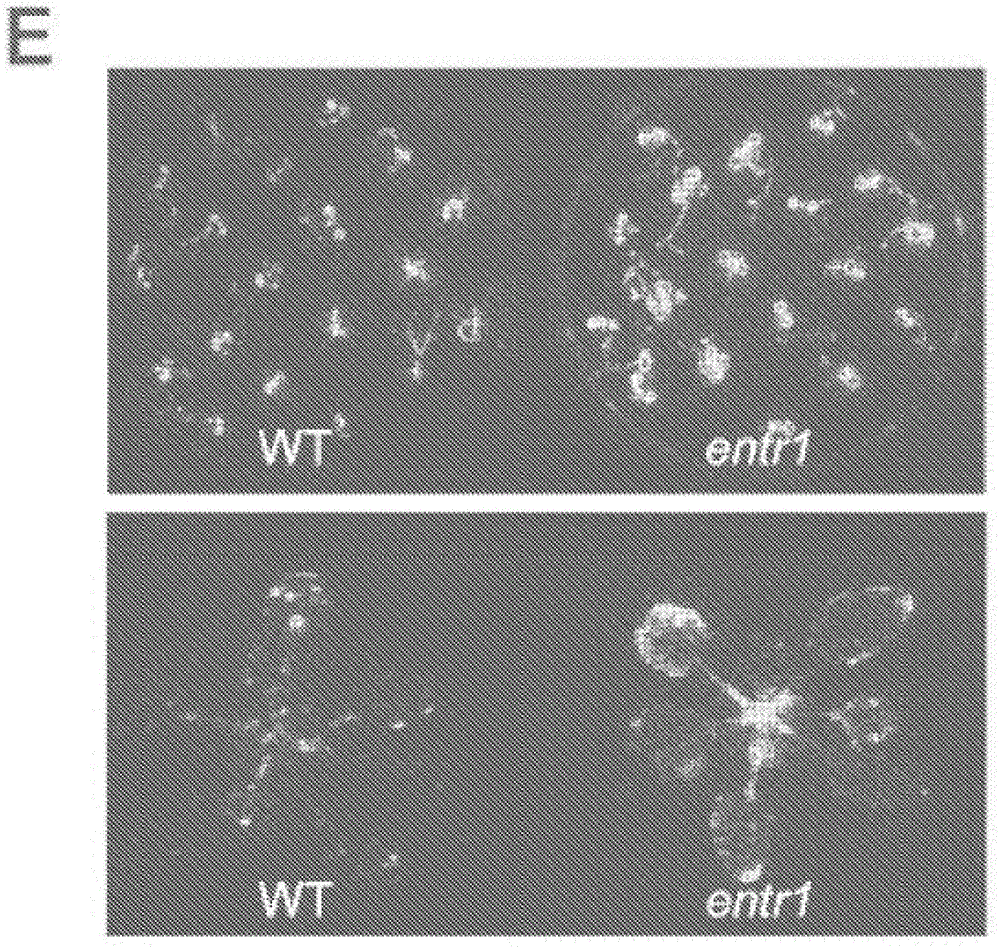Methods and compositions for altering temperature perception in eukaryotic organisms
一种真核生物、改变温度的技术,应用在生物化学设备和方法、植物学设备和方法、化学仪器和方法等方向,能够解决籽粒质量不利等问题
- Summary
- Abstract
- Description
- Claims
- Application Information
AI Technical Summary
Problems solved by technology
Method used
Image
Examples
Embodiment 1
[0141] HSP70 is an output of the ambient temperature sensing pathway
[0142] To identify the dominant ambient temperature response in seedlings, we analyzed the transcriptome of 12-day-old plants grown at 12°C and then transferred to 27°C. We found 2454 genes were at least 2-fold upregulated and 2880 genes were down-regulated 2-fold under this condition (ambient temperature transcriptome; figure 1 A). In a similar study, there was no apparent induction of stress markers, suggesting that this temperature range does not cause heat stress (Balasubramanian et al., 2006). We found that HSP70 (At3g12580) was strongly upregulated at higher temperatures ( figure 1 B). Although this transcriptome is characterized in response to changes in ambient temperature, since the transcriptional output of thermosensing pathways should differ at different fixed temperatures, what we sought to determine was whether any of these genes would contribute to differences in fixed growth temperatures....
Embodiment 2
[0144] ARP6 is in an ambient temperature-sensing pathway that controls flowering.
[0145] To identify genes required to control the ambient temperature transcriptome, we screened 2600 individual M2 families of fast-neutron-irradiated HSP70::LUC seedlings. Two mutants entr1 and entr2 (Enhanced Temperature Response 1 and 2) showed constitutively higher LUC expression ( figure 1 E). Genetic analysis using complementary crossovers revealed that the mutations were allelic. Cloning-based transcripts indicated the absence of ARP6 transcripts in both entr1 and entr2 ( figure 1 F). Entr1 transformed with the ARP6 genomic fragment was able to rescue the expression level of HSP70::LUC and the abnormal development of entr1 ( figure 1 G), which confirms that it is a novel arp6 allele. We will refer to entr1 and entr2 as arp6-10 and arp6-11, respectively. Arabidopsis mutants in ARP6 have been identified in anthesis screens (Choi et al., 2005; Deal et al., 2005; Martin-Trillo et al., ...
Embodiment 3
[0147] ARP6 comprehensively controls developmental responses to ambient temperature
[0148] In response to higher ambient temperatures, plant architecture undergoes specific adaptive changes including increases in hypocotyl growth and petiole elongation (Gray et al., 1998; Koini et al., 2009). To understand whether arp6-10 exhibits a comprehensive high-temperature response in terms of its structure, HSP70 expression, and flowering, we analyzed the above traits. We found that structural responses were strongly enhanced in the arp6 background ( figure 2 G and 2H and Figure 8 ), so that arp6 plants grown at 17°C exhibited a greater degree of hypocotyl elongation and petiole growth than wild-type plants grown at 22°C, with an equal amount of difference between 22°C and 27°C. These phenotypes have been shown to be dependent on the PIF4 transcription factor (Koini et al., 2009), so not surprisingly we also observed differences in temperature induction, even in the arp6-10 mutan...
PUM
 Login to View More
Login to View More Abstract
Description
Claims
Application Information
 Login to View More
Login to View More - R&D
- Intellectual Property
- Life Sciences
- Materials
- Tech Scout
- Unparalleled Data Quality
- Higher Quality Content
- 60% Fewer Hallucinations
Browse by: Latest US Patents, China's latest patents, Technical Efficacy Thesaurus, Application Domain, Technology Topic, Popular Technical Reports.
© 2025 PatSnap. All rights reserved.Legal|Privacy policy|Modern Slavery Act Transparency Statement|Sitemap|About US| Contact US: help@patsnap.com



